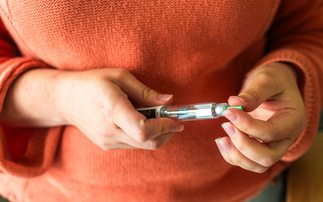Insurance providers need to look more closely at increasing levels of extreme drinking in the UK and the impact they may have on early death claims, explains Paul Edwards
The new Licensing Act came into force in November amid a blaze of publicity. To its supporters the new act achieves two objectives; liberalisation and tough penalties for any antisocial behaviour.
Opponents, however, see the legislation as a disaster, giving a society notorious for its habit of binge drinking licence to drink longer and in greater volume.
The liberalisation, in their view, far from bringing to the UK a Mediterranean "cafe culture", creates a ticking time bomb of health, economic and social problems.
At the heart of these issues is alcohol, the oldest and most widely consumed psychoactive drug.
The UK's relationship with alcohol is a long if hazy one and stretches back 10,000 years to the Stone Age.
Indeed, societies that perfected fermentation (beer making) and viticulture (winemaking) are considered the cradles of modern civilisation.
During the Middle Ages access to clean drinking water was a constant problem, so the consumption of alcohol was a necessity for all ages irrespective of sex, class or rank.
Indeed, some historians have commented - partly in jest - that the industrial revolution began when we discovered coffee and tea and were able to sober up.
In modern society, with easy availability of food, clean drinking water and thousands of non-alcoholic drinks, what purpose do alcoholic drinks serve?
Cultural purposes
Apart from the social and cultural purposes - some think it's good to drink wine with food or have a beer with sport - which are important, humans drink alcohol for one simple reason; people like to get drunk.
The effect of having a drink depends on a number of complex factors such as the person, the time of consumption, their mood and state of health. Essentially, however, when we consume wine or beer the alcohol is quickly absorbed through the lining of the stomach and passed into the bloodstream. The brain and the central nervous system are particularly prone to absorb this alcohol laden blood, and it is in the central nervous system that the effects are most pronounced.
As a depressant, it can provide pleasing effects, giving us relief from anxiety. It can also make us euphoric, friendly and talkative.
Overall, then, it acts as a "social lubricant". However, it also makes us uninhibited and prone to aggression and impairs our judgement.
Alcohol is also a relaxant. It increases our heart rate and dilates peripheral blood vessels giving the drinker a warm, flushed feeling.
At the same time it decreases our reaction time and impairs fine muscle coordination, balance, speech and vision, which is why driving after drinking is not a terribly good idea, and is illegal.
Like coffee, alcohol is a diuretic which means it causes the kidneys to remove water from the body and produce more urine.
The dry mouth and headaches associated with hangovers are related to this drying out process.
Alcohol is also an irritant or poison so in sufficient quantity it will cause the lining of the stomach to become inflamed and give rise to the second common symptom of hangovers, vomiting.
The effects described above are determined by the drinker's blood alcohol concentration (BAC) measured as milligrams per 100g of blood. As a rule of thumb a standard drink or one unit increases a drinker's BAC by 15mg%.
Overall, however, the effect of alcohol is dependent on the individual, the amount, speed of consumption, and whether they are male or female (women tend to have more fat and less water in their bodies and are therefore less able to dilute alcohol).
In general, however, most people are able to metabolise and excrete one unit of alcohol every hour.
This means if you drink more than one unit an hour your BAC will increase and you will become more drunk.
The media have in recent years invented terms such as lager louts and spent hours of broadcasting time and pages of print bemoaning the binge drinking culture. But what is meant by binge drinking?
Doctors have defined a binge as drinking double the daily recommended maximum limit - three or four units for men and two or three units for women - in a 24-hour period. But why does this matter?
Social commentators point to the fact that large numbers of the population are bingers; in 2003/4 the Office of National Statistics found that two-fifths of men and nearly a quarter of women had drunk double the recommended amount on at least one day in the previous week.
However, young adults appear to be the worst offenders - 37% of men and 26% of women were heavy bingers.
Disproportionate
Given the effects alcohol has on the body, it is not surprising that accidents have a disproportionate effect on these age groups. Road accidents are the second most common cause of death in young people.
Suicide also features as a major cause of death in both sexes in this age group, which is not surprising as alcohol features in 65% of all suicide attempts.
One recent survey reports that 42% of respondents in a survey of young adults had been caught up in violence during a night out drinking.
The implications, economically and socially, of these phenomena are frightening.
The NHS estimates that 35% of all accident and emergency admissions are related to alcohol, but between midnight and 5am, when the effects of bingeing come to the fore, a massive 70% of A&E admissions are directly attributable to alcohol.
Given the immediate effect alcohol has on, and the harm it can cause to, a person's body, it is no surprise that it can be a major cause of long-term chronic ill-health.
Overall in the UK alcohol directly causes around 6,000 deaths a year. Some estimates suggest it causes approximately 10% of all ill-health and premature deaths in Europe.
Indeed, the World Health Authority lists alcohol, after smoking and hypertension (high blood pressure) as one of the leading causes of premature death, more common than raised cholesterol, type II diabetes and five times more common than asthma.
In addition to this, like smoking, alcohol induces and exacerbates other diseases.
Hypertension
For example, a person who drinks more than three units of alcohol a day will be three times more likely to develop hypertension, which is a leading cause of heart attacks and strokes.
Many malignant cancers of the gastro-intestinal tract are directly or indirectly caused by regular alcohol use. It is the primary cause of cancer of the oesophagus (the gullet) in 20-30% of cases, and major contribution to cancers of the larynx and liver.
Rates of mouth cancer, which kills more people than cervical and testicular cancer combined, have dramatically risen in recent years from, 3,411 in 1992 to 4,285 in 2001, a rise directly linked to increasing rates of alcohol intake.
It is the liver, though, which receives the most direct harm from long-term alcohol misuse.
Frequent and mild alcohol consumption invariably results in the liver storing fat deposits and this fatty liver or steatosis can cause the liver to increase in size. Certain types of lipids or triglycerides (similar to cholesterol), along with certain liver enzymes, are present at mildly elevated levels in the blood.
If alcohol misuse persists, the drinker can go on to develop alcoholic hepatitis. This is where the liver is inflamed, and its function becomes deranged.
For young adults this is a big killer, accounting for about 3% of deaths in people aged 15-34. By this stage the person is anaemic, suffering from weight loss and at risk of infection.
If the condition is alcohol induced, the sufferer will also have other complications of alcohol abuse such as oesophageal bleeding, sexual disease and mental impairments.
Given the serious nature of diseases that long term alcohol use can induce, and the increasing numbers of people drinking to excess, it is little wonder that the rises in the number of deaths related to alcohol have dramatically increased in recent years.
If current social trends persist, life insurers could, like wider society, be facing a huge problem in terms of an increasing number of early claims
In the next few decades we can certainly expect the number of early death claims related to alcohol to rise, but we also should expect vulnerabilities in other areas.
Critical illness products, for example, which pay out for organ transplants, heart disease and cancer, should be of particular concern.
The burden of detecting any potential problems related to alcohol consumption remains the almost exclusive responsibility of the underwriter.
Dilemma
The dilemma, of course, is that underwriters are entirely reliant on applicants being honest when they are asked about their alcohol consumption.
Historically, most applicants are notoriously conservative about their true level of alcohol consumption.
This is in part related to genuine confusion and ignorance among the general population about what constitutes units of alcohol and in part to the widespread attitude of tolerance towards drinking.
Does this necessarily matter? It is surely reasonable to say most people know what constitutes a high level of drinking, so why can't insurers simply rely on the protection of non-disclosure?
The Financial Ombudsman's ruling on a case recently has poured some doubt on too much over-reliance on detecting non-disclosure at claim.
The case in question related to a cancer claim in which the provider, when investigating the claim, discovered the applicant had in the past drunk the equivalent of 40 pints every week - a fact he failed to mention on the application form.
However, because of the ambiguity over what the claimant drank near the time of the application, the Ombudsman ruled in the claimant's favour.
Of course underwriters, when they are suspicious, will request reports from GPs and examinations with blood tests, both of which can prove invaluable.
For example, a young man with a history of drink-driving convictions, or regular attendances to A&E with fractures or cuts and bruises to the face can often be the trigger for further underwriting investigations. Liver function tests can reveal if certain enzymes are present in the blood in high levels and can tell an underwriter if a person is a likely to be a serial or heavy drinker.
One of the issues the Ombudsman case did highlight was that most insurers are relatively relaxed in their underwriting approach to disclosed levels of alcohol when there are no other associated risk factors.
Indeed, most underwriting manuals currently in use only suggest obtaining medical evidence when an applicant discloses consumption two or three times the weekly recommended maximum, and only applying premium loadings (if there are no other problems such as abnormal liver function) at even higher levels.
Unthinkable
One unthinkable response would be to put up premium rates wholesale to cover the increased risk, as was done in the 1980s with HIV.
However, it would take a brave actuary to advocate such a response. Instead, as an industry we need to continue to focus on limiting our exposure to non-disclosure; techniques such as tele-underwriting can certainly add value here.
Other more radical methods could include more targeted underwriting of risk groups, obtaining random liver function tests on young people, similar to the way in which insurers currently obtain cotinine (the by-product of tobacco use) tests on non-smokers.
Alcohol remains the most widely used drug in the UK, with its culture of binge drinking.
It could, socially and econ-omically, prove a costly habit. For the life insurance industry, if trends continue, the future could prove equally costly as it could see a rising amount of claims associated with heavy alcohol.
One solution would be to set more robust underwriting practices and implement of new methods to tackle non-disclosure.
In this way the industry will be able to weather the problem in the long term.
HOW MUCH SHOULD WE DRINK?
- One unit is equivalent to 8g of alcohol, a glass of wine, half a pint of beer, a quarter of a pint of strong lager, two-thirds of a bottle of alcopops or a pub measure of spirits.
- The recommended maximum daily intake of alcohol is between three and four units for men and between two and three units for women.
The Licensing Act 2003
- Gives police powers to close down disorderly and noisy licensed premises.
- Increases penalties for licensees who allow disorderly conduct, serve people who are drunk, or serve alcohol to children.
- Gives local authorities powers to ban drinking in areas with a history of alcohol-related antisocial behaviour.
A proposed Violent Crime Reduction Bill would
- Give courts the power to ban those responsible for alcohol-related disorder from licensed premises for up to two years.
- Enable police to stop licensed premises selling alcohol for up to 48 hours for selling drink to children.











